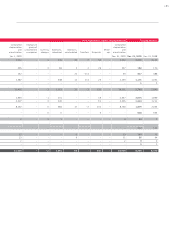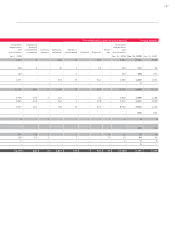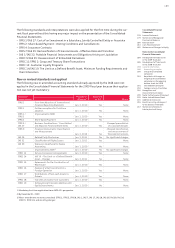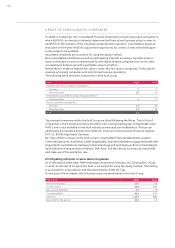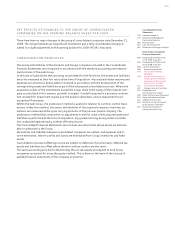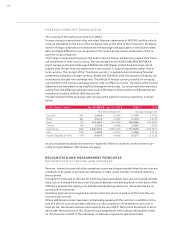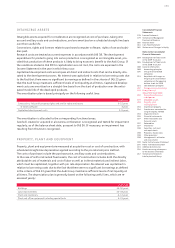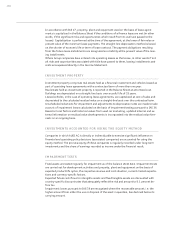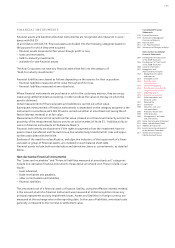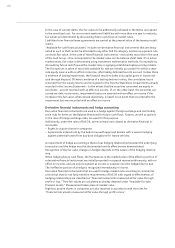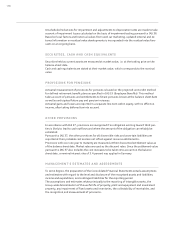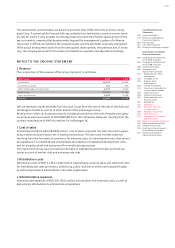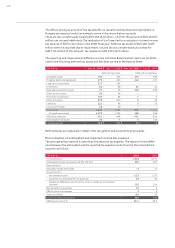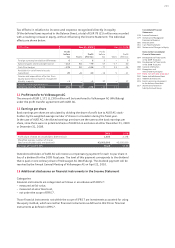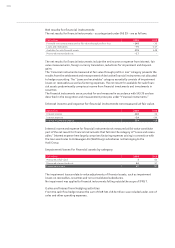Audi 2009 Annual Report Download - page 198
Download and view the complete annual report
Please find page 198 of the 2009 Audi annual report below. You can navigate through the pages in the report by either clicking on the pages listed below, or by using the keyword search tool below to find specific information within the annual report.
195
Consolidated Financial
Statements
178 Income Statement
179 Statement of Recognized
Income and Expense
180 Balance Sheet
181 Cash Flow Statement
182 Statement of Changes in Equity
Notes to the Consolidated
Financial Statements
184 Development of fixed assets
in the 2009 fiscal year
186 Development of fixed assets
in the 2008 fiscal year
188 General information
192 Recognition and
measurement principles
192 Recognition of income
and expenses
193 Intangible assets
193 Property, plant
and equipment
194 Investment property
194 Investments accounted for
using the equity method
194 Impairment tests
195 Financial instruments
197 Other receivables and
financial assets
197 Deferred tax
197 Inventories
198 Securities, cash and
cash equivalents
198 Provisions for pensions
198 Other provisions
198 Management’s estimates
and assessments
199 Notes to the Income Statement
205 Notes to the Balance Sheet
215 Additional disclosures
236 Events occurring subsequent
to the balance sheet date
237 Statement of Interests
held by the Audi Group
FINANCIAL INSTRUMENTS
Financial assets and liabilities (financial instruments) are recognized and measured in accor-
dance with IAS 39.
In accordance with IAS 39, financial assets are divided into the following categories based on
the purpose for which they were acquired:
–financial assets measured at fair value through profit or loss,
–loans and receivables,
–held-to-maturity investments,
–available-for-sale financial assets.
The Audi Group does not have any financial assets that fall into the category of
“held-to-maturity investments.”
Financial liabilities are classed as follows depending on the reasons for their acquisition:
–financial liabilities measured at fair value through profit or loss,
–financial liabilities measured at amortized cost.
Where financial instruments are purchased or sold in the customary manner, they are recog-
nized using settlement date accounting, in other words at the value on the day on which the
asset is delivered.
Initial measurement of financial assets and liabilities is carried out at fair value.
Subsequent measurement of financial instruments is dependent on the category assigned to the
instrument in accordance with IAS 39 and is carried out either at amortized cost (using the ef-
fective interest method) or at fair value.
Measurement of financial instruments at fair value is based on a three-level hierarchy and on the
proximity of the measurement factors used to an active market (cf. Note 33, “Additional disclo-
sures on financial instruments in the Balance Sheet”).
Financial instruments are abandoned if the rights to payments from the investment have ex-
pired or been transferred and the Audi Group has substantially transferred all risks and oppor-
tunities associated with their title.
Evidence of the need for reclassification, and objective indicators of the impairment of a finan-
cial asset or group of financial assets, are reviewed on each balance sheet date.
Financial assets include both non-derivative and derivative claims or commitments, as detailed
below.
Non-derivative financial instruments
The “Loans and receivables” and “Financial liabilities measured at amortized cost” categories
include non-derivative financial instruments measured at amortized cost. These include, in par-
ticular:
–loans advanced,
–trade receivables and payables,
–other current assets and liabilities,
–financial liabilities.
The amortized cost of a financial asset or financial liability, using the effective interest method,
is the amount at which a financial instrument was measured at initial recognition minus any
principal repayments and any impairment losses. Assets and liabilities in foreign currency are
measured at the exchange rate on the reporting date. In the case of liabilities, amortized costs
generally correspond to the nominal or settlement value.


